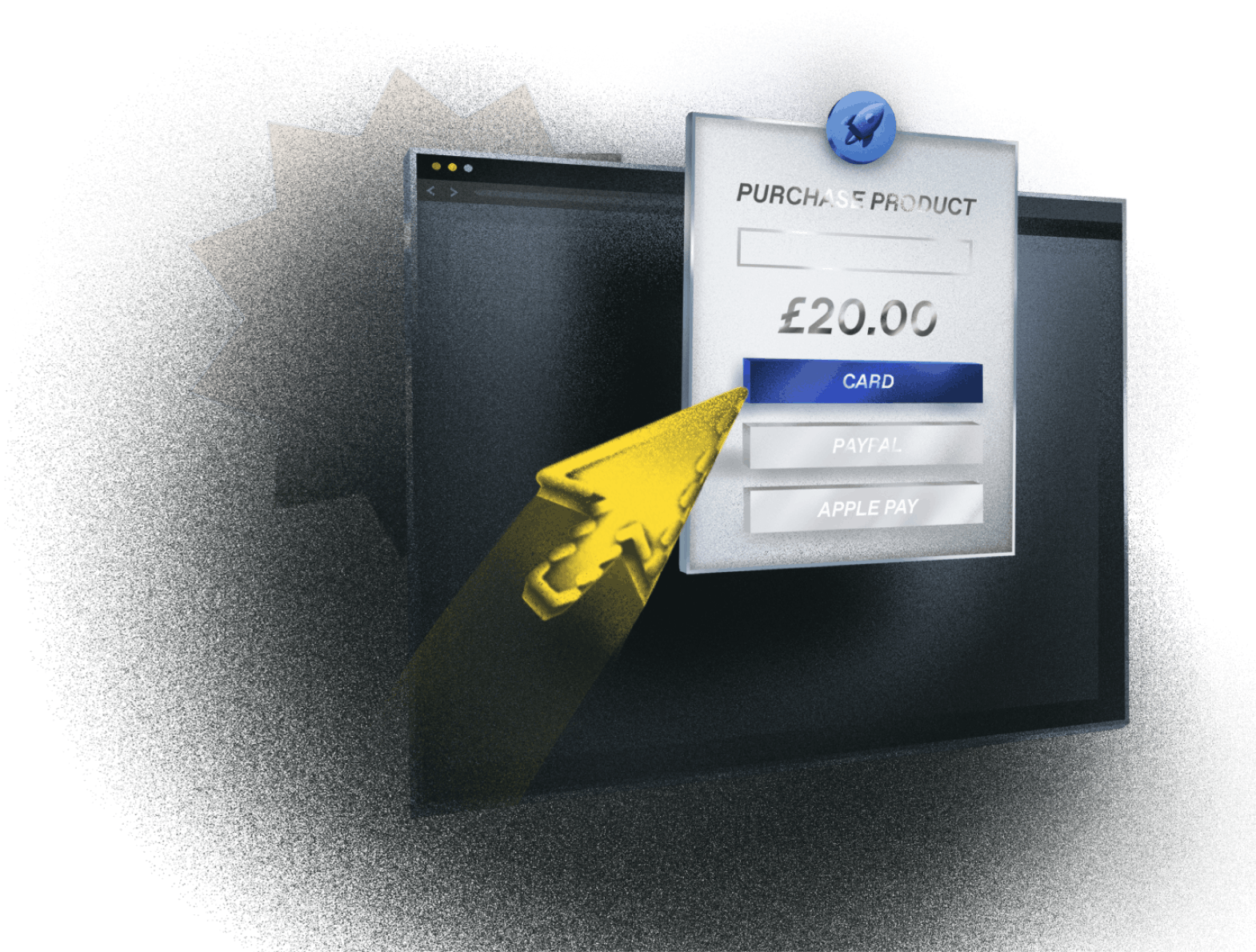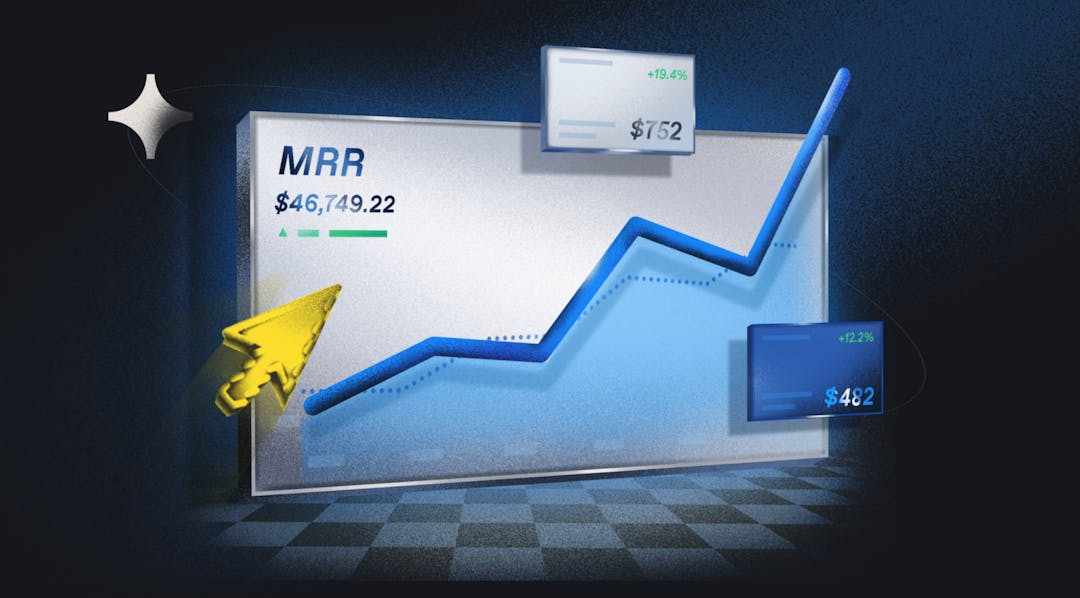Learn how to improve the checkout process on your website. Incentivize potential customers to make a purchase & reduce cart abandonment rate.
If visitors to your site are going to become customers, then at some point, they'll have to go through the checkout process. A convoluted checkout process can send those visitors heading off to your nearest competitor for a better customer experience. It's important for the success of your business that this process be as streamlined as possible. In this post, we'll discuss what checkout flow is and how it can be improved.

What is a checkout flow?
The checkout flow refers to the series of steps that a customer must take during the checkout process. The more complex your checkout flow, the more friction the customer will experience during checkout. This provides the customer with more opportunities to get frustrated and abandon you for a competitor. Making your checkout flow as smooth as possible is critical to maximizing your conversions.
Key steps in a checkout process
Every checkout process has a minimum number of steps the customer must go through to complete the process. Before we start talking about how to streamline the checkout process on your ecommerce site, let's go over what those required steps are.
Pre-checkout
Before you can get the customer smoothly through the checkout process, you need to get them to the checkout page first. Your product pages should provide the customer with the tools and information they need to be decisive and move forward in the buying process. Depending on how your site works, the customer may also need to create an account before checking out.
Add to cart (e-commerce)
Once the customer has decided that they want to purchase a product, they need to add it to their cart when they are done shopping and are ready to check out. Just as it should be easy for customers to make purchase decisions, adding those products to their cart should be a seamless shopping experience.
Billing & payment information
Next, your site will tally the cost of all items in the customer's cart. This process takes into account any options that customers have selected, the shipping and handling charges, and any taxes that apply. The customer should be presented with an easy-to-understand overview of these charges and the final amount due. From there, they should be given the option to choose from the available payment methods and enter their details.
Payment confirmation
This is the last step of the checkout process. Customers are presented with a final overview of their order, including the items included in their purchase, the total cost, their chosen payment method, and the shipping information they've provided. They are then asked to confirm the payment to finalize the order.
Thank you page
The final page the customer sees as a part of the checkout process is the thank you page. This page serves two purposes. First, it lets the customer know that their order was submitted successfully. Second, it allows you to show them how much you appreciate their business.
Why checkout flow is important for maximum sales performance
For most industries, customers have many options to choose from. The world's largest ecommerce companies have spent a great deal of time removing as much friction as possible from the checkout process. This has significantly raised customer expectations around what constitutes an acceptable checkout flow. Meeting or exceeding those expectations is important for three reasons:
It is a fundamental process
While there are some aspects of ecommerce that are optional, the checkout process isn't one of them. There's no way for your customers to avoid this process if they want to purchase from you. They can, however, decide that the process is too convoluted and leave you for a competitor.
It influences customer experience
Customer experience determines how likely a customer is to purchase from you, but also how likely they are to tell their friends and acquaintances about you. Great customer experiences can result in effective word-of-mouth advertising, but poor customer service can have the opposite effect.
It impacts every product sale
Checkout flow influences the customer experience for that particular order and any future orders. Once they've committed to making a purchase, a customer may suffer through a less-than-optimal checkout procedure. If the experience was too inconvenient, though, they may look elsewhere next time.
10 best practices to streamline checkout flow
Now that you understand the importance of checkout flow, let's take a look at how we can streamline the steps we looked at earlier. Below are 10 best practices to keep in mind when designing your checkout process:
1. Make "Add to Cart" button visible
Customers shouldn't have to hunt for a way to add a product to their cart. A common mistake is making the "Add to Cart" button too small or too out of the way. It should be a prominent part of the web page, easily visible without scrolling and with a design that stands out from the rest of the page.
2. Simplify account creation
If you decide to require an account before customers can make a purchase, you should make the account creation process as quick as possible. This is an extra step before customers can accomplish their goal of paying you and receiving their product, so make it as painless as possible.
3. Consider guest checkout option
Unless having an account with you is an absolutely necessary part of delivering your product, you should consider allowing customers to check out without one. This will eliminate an area of friction and get them through the process quicker.
4. Create a checkout process progress indicator
You know how many steps are in your checkout process and how many pages it will take to complete them, but a customer going through the process for the first time doesn't. With a progress indicator that's easily visible on the page, your customers will be able to gauge how long the process will take.
5. Design a transparent billing page
Customers don't like hidden charges. Even a total price that's listed without an itemized breakdown can obscure how the total was reached. A transparent billing page avoids any confusion that may occur on the part of the customer and helps to increase their trust in your business.
6. Offer multiple secure payment options
People have different preferences in payment options. Some customers may only be willing, or able, to pay with a certain payment option. You should provide as many payment options as you can, so all of your customers can pick the one that's most convenient for them.
7. Use chatbots/customer support/live chat
Should a customer have a question about the process while they're checking out, they'll likely abandon the cart if they can't get an answer. Chatbots and live chat help keep customers in the funnel until they've completed the process.
8. Simplify return/refund/product exchange processes
Although the checkout process technically ends after the thank you page, the customer experience doesn't always end there. If they need to return a product for any reason, the process should be just as easy as the checkout process was.
9. Optimize mobile checkout flow
Website interfaces can look significantly different on mobile than they do on desktop. With mobile being a major source of web traffic these days, optimizing for the experience is important.
10. Monitor your checkout completion rate and other related metrics
Keep an eye on how many of your customers are abandoning their carts. Tracking metrics like this can help you determine if your efforts to optimize your checkout flow are working.
Optimize your ecommerce checkout process
ProfitWell Metrics is a free tool for subscription ecommerce companies to track the metrics they need to improve growth. With Metrics, you'll be able to see how many people are abandoning a cart without making a purchase. You can even use the comprehensive benchmarks in the tool to see how your numbers stack up with companies similar to yours.
With the deep segmentation tools in Metrics, you'll be able to split your customers into 107 different segments. With more accurate buyer personas, you'll be able to craft more engaging web copy and keep customer interest through to the end of the checkout process.
If you're losing customers to failed payments, ProfitWell Retain can help win them back. Retain builds on advanced A.I. and ProfitWell's extensive experience in the subscription industry to win back lost customers.
Checkout flow FAQs
What is checkout optimization?
Checkout optimization is the process of streamlining your checkout flow to remove friction from the customer's experience.
What makes a good checkout experience?
A good checkout experience should be intuitive and fast, without unnecessary steps or confusing interface elements.
What are the most common reasons for high cart abandonment rate?
Some of the most common cart abandonment reasons include unexpectedly high shipping costs, long or confusing checkout flows, and being required to create an account before purchasing.



